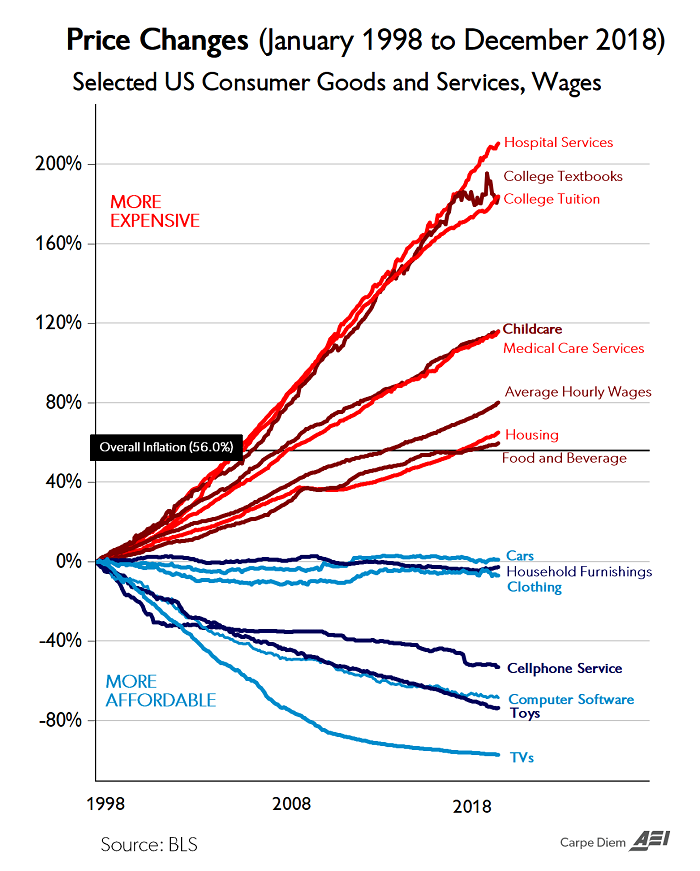Media

The Truth About Wages
There is one undoubted truth in debates about wages: everyone wants them to go up.
Unfortunately, lawmakers can’t force everyone’s wage to increase, unless they are willing to destroy tens of thousands of jobs.
Here are a few of the most common minimum wage myths.
Myth #1: Wages are stagnant.
AEI scholar Michael Strain points out this claim is extrapolated from wages in the 1970s, which can be misleading for several reasons. For instance, adjusting for inflation becomes more difficult the further back you go and most of today’s workers were children in the 70s. That is, we are looking at two different sets of workers.
On the other hand, if you change the date just a bit and compare today’s wages to those in 1990, you find U.S. workers’ wages have grown by 20 percent!
Furthermore, recent Bureau of Labor Statistics reports show earnings are rising faster for workers at the lower end of the pay scale. And there is evidence to suggest the “shrinking middle class” is due to rising incomes combined with an influx of younger workers and immigrants. In other words, on the individual level people are better off.
And if we narrow things down to Pennsylvania, wages grew at 4 percent last year and the Independent Fiscal Office (IFO) expects it to reach 4.1 percent next fiscal year. Not surprisingly, this healthy growth in wages corresponds with passage of federal tax reform.
On a local level, paychecks in the Pittsburgh region have been rising more than five times as fast as those across the state and twice as fast as those across the country.
Myth #2: Minimum wage increases are the only way low-income workers get a raise.
This concept is not only crude, but factually unfounded. Most minimum wage earners receive raises or move on to higher paying jobs in a short time. Plus raising entry-level wages can price out inexperienced or less productive workers. This harms the very people that are in need of job opportunities like teenagers, those returning from prison, and people who have been out of the workforce for years.
In fact, the IFO estimates Pennsylvania would lose 34,000 job opportunities if lawmakers established a $12 minimum wage, making 34,000 people’s true minimum wage $0 per hour.
However, politicians do have other tools at their disposal to motivate businesses to raise their entry level wage voluntarily. The primary tool is called tax reform. After federal tax reform at least five large Pennsylvania-based financial institutions announced starting wages of $12 or more. Over the past 18 months national employers raised starting wages, including Walmart ($11), CVS ($11), Target ($12), Costco ($15), and Amazon ($15).
And state lawmakers could do even more by enacting state tax reform.
Myth #3: It’s getting harder for families to make ends meet.
It’s true the cost of health care, childcare, and college are outpacing inflation and wage gains. It’s also true that behind these rising costs are vast government subsidy schemes implemented for similar reasons as the minimum wage.
On the other hand, the cost of transportation, cell phones, laptops, and food have gone down or followed wage growth. Here’s a great chart from Marc Perry showing the diversion.
If we really care about mobility and equal opportunity, we should focus on eliminating destructive policies like extensive occupation licensing, job barriers for returning citizens, subsidizing schools instead of students, and welfare rules that punish work.
No one needs to convince Pennsylvanians to work hard and earn their success, we’re great at that. Instead lawmakers need to stop erecting barriers in the name of helping. A higher minimum wage would be one more obstacle to overcome.